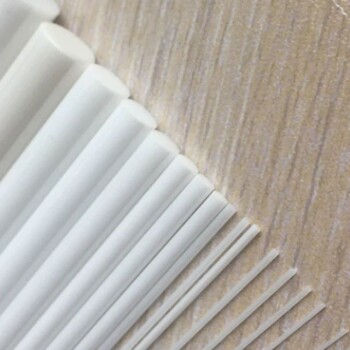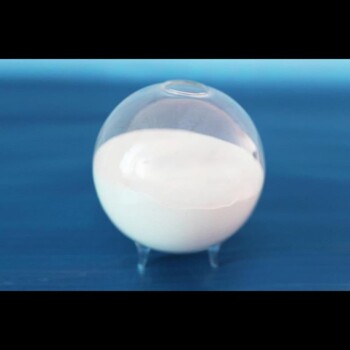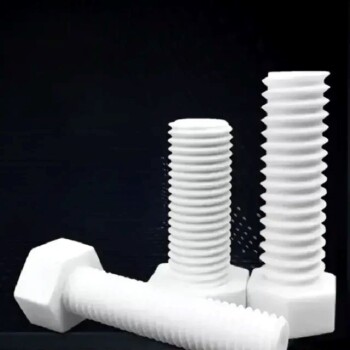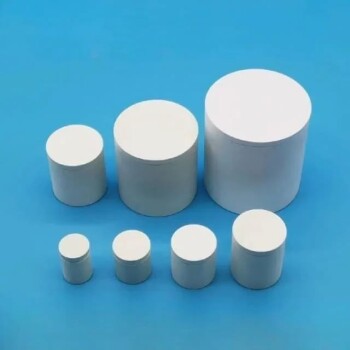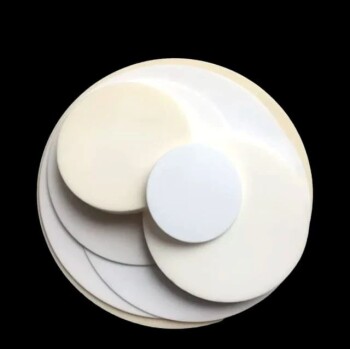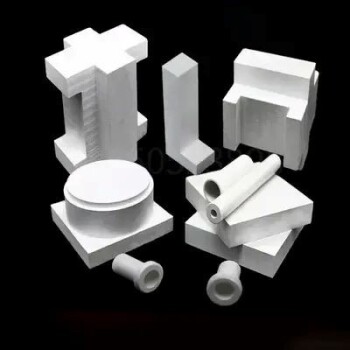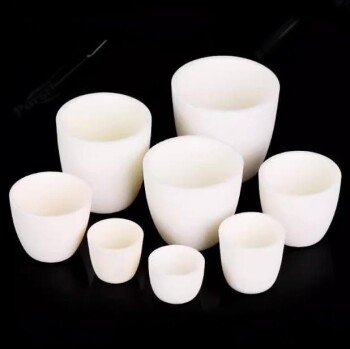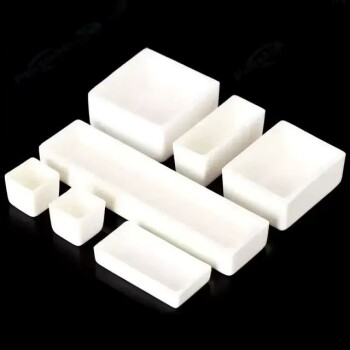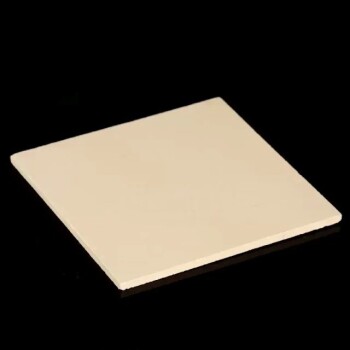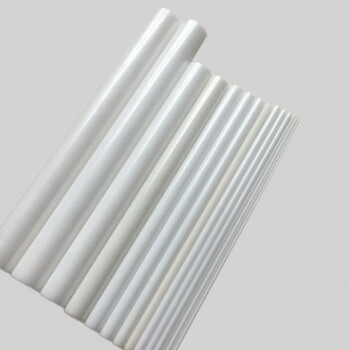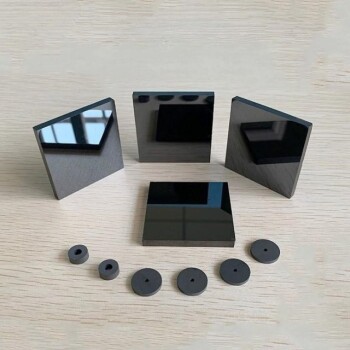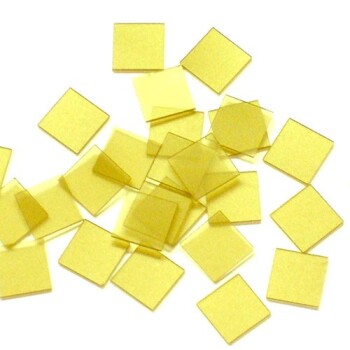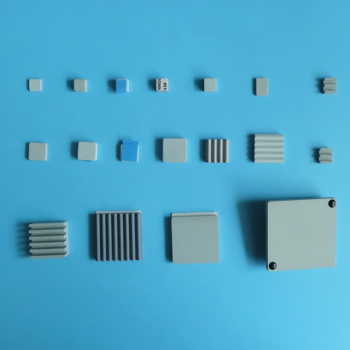고순도 알루미늄 산화물
하이테크 산업에서의 응용 분야
고순도 알루미나(HPA)는 다양한 첨단 산업 분야에서 폭넓게 활용되고 있으며, 각각의 고유한 특성을 활용하여 성능과 신뢰성을 향상시킵니다. 다음과 같은 영역에서 형광 물질 HPA는 LED 및 플라즈마 디스플레이를 비롯한 다양한 조명 기술에 필수적인 고품질 형광체를 생산하는 데 없어서는 안 될 필수 요소입니다. 이러한 형광체는 정밀한 화학적 순도와 구조적 무결성이 요구되며, HPA는 이 두 가지 요건을 모두 충족합니다.
In 투명 세라믹 에서 HPA는 광학적 투명성과 기계적 강도 및 열 안정성을 결합한 소재를 만드는 데 사용됩니다. 따라서 투명 갑옷, 고압 창문, 의료용 영상 장치와 같은 응용 분야에 이상적입니다. 이러한 세라믹의 광학적 투명성과 내구성은 생산에 사용되는 알루미나의 순도가 높기 때문입니다.
전자 산업은 다음과 같은 형태로 HPA의 이점을 크게 누리고 있습니다. 전자 기기 . 고순도 알루미나는 집적 회로용 기판 제조에 사용되어 뛰어난 열전도율과 유전체 특성을 제공합니다. 이를 통해 전자 부품이 높은 스트레스 조건에서도 효율적이고 안정적으로 작동하도록 보장합니다. 또한 HPA는 첨단 전자 장치 제조에 필수적인 고품질 반도체 결정을 성장시키기 위한 도가니 생산에도 사용됩니다.
새로운 에너지 기술 도 다양한 응용 분야에서 HPA를 사용합니다. 고체 배터리에서 HPA는 전해질의 충전재로 사용되어 배터리의 성능과 수명을 향상시킵니다. 고순도와 안정성으로 인해 작동 중 극한의 조건에 노출되는 이러한 핵심 부품에 이상적인 선택입니다. 또한 HPA는 광학적 특성이 태양 에너지 변환 효율에 기여하는 광전지 생산에 사용됩니다.
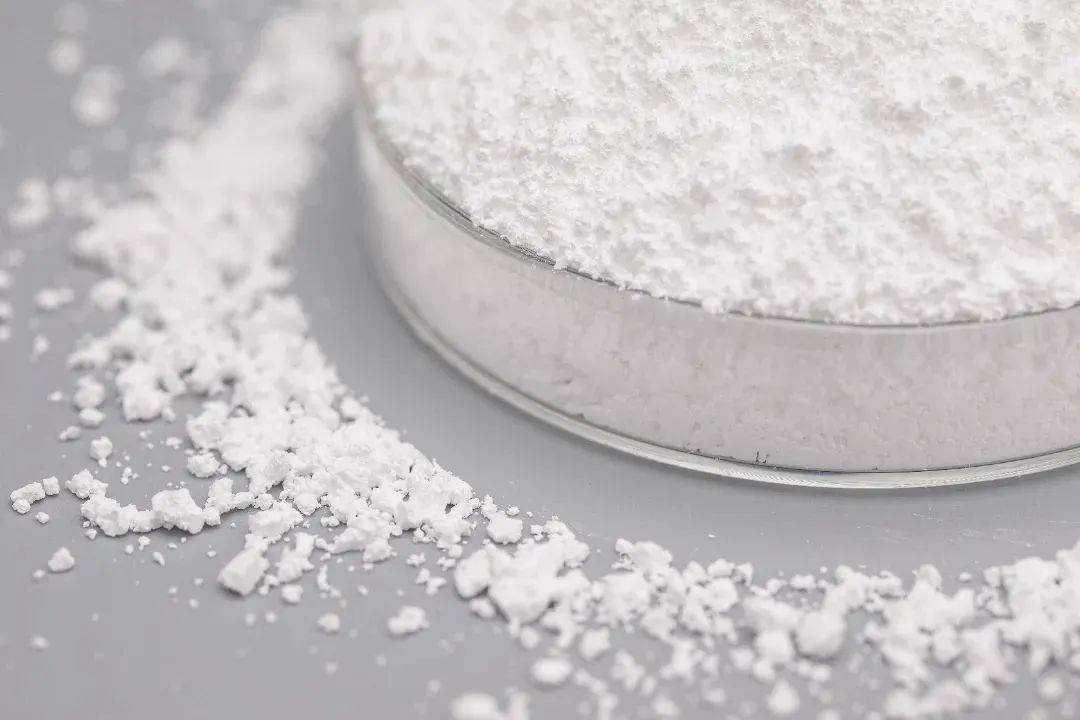
다음 분야에서 촉매 재료 HPA는 촉매의 지지 재료로 사용되어 화학 반응의 효율을 향상시키는 안정적이고 다공성 구조를 제공합니다. 이 응용 분야는 다양한 화학 물질을 생산하고 유해한 배출을 줄이기 위해 촉매 공정이 필수적인 석유화학 및 환경 보호와 같은 산업에서 특히 중요합니다.
마지막으로 항공우주 재료 는 뛰어난 기계적 강도와 내열성으로 인해 HPA를 사용하면 이점을 얻을 수 있습니다. 고순도 알루미나는 고온과 열악한 환경을 견딜 수 있는 능력이 중요한 열 보호 시스템과 같은 부품 생산에 사용됩니다. 따라서 HPA는 항공우주 차량의 안전과 신뢰성을 보장하는 데 필수적인 소재입니다.
전반적으로 이러한 첨단 산업 전반에 걸쳐 고순도 알루미나의 다양한 응용 분야는 현대 기술에서 다재다능하고 필수 불가결한 소재로서의 중요성을 강조합니다.
시장 동향 및 향후 전망
사파이어 시장, 특히 LED 산업은 여전히 고순도 산화알루미늄의 최대 소비처입니다. 이러한 우위는 발광과 효율을 향상시키는 고품질 소재에 대한 LED 업계의 지속적인 수요에 힘입은 것입니다. 글로벌 사파이어 시장은 2024년까지 그 규모가 107억 달러에 달할 것으로 예상되는 등 상당한 성장을 보일 것으로 전망됩니다. 이러한 성장은 자동차 조명, 일반 조명 및 가전제품과 같은 다양한 애플리케이션에서 LED 채택이 증가하는 등 여러 요인에 의해 촉진되고 있습니다.
또한 시장은 더 나은 성능과 내구성을 제공하는 고급 사파이어 소재로의 전환을 목격하고 있습니다. 이러한 추세는 제조 기술의 혁신으로 고순도 산화알루미늄의 접근성과 비용 효율성이 향상되면서 뒷받침되고 있습니다. 또한 에너지 효율적인 조명 솔루션에 대한 수요가 증가하면서 시장이 더욱 발전하고 있습니다.
지리적 동향 측면에서 아시아 태평양 지역은 주요 LED 제조업체의 존재와 중국 및 인도와 같은 국가의 급속한 산업화로 인해 시장을 주도 할 것으로 예상됩니다. 북미와 유럽도 엄격한 에너지 효율 규제와 스마트 조명 솔루션의 채택 증가에 힘입어 중요한 시장으로 부상하고 있습니다.
고품질의 에너지 효율적인 조명 솔루션에 대한 수요가 계속 증가함에 따라 사파이어 시장의 향후 전망은 전반적으로 밝아 보이며, 지속적인 성장이 예상됩니다.
새로운 애플리케이션
고순도 알루미나는 전통적인 산업을 혁신할 뿐만 아니라 첨단 기술 분야에도 크게 진출하고 있습니다. 전극 첨가 재료로서 전도성과 안정성을 개선하여 배터리의 성능을 향상시키며, 이는 전기 자동차 및 재생 에너지 저장 시스템의 응용 분야에 매우 중요합니다. 또한 고체 배터리 전해질 충전재로 사용하면 기존의 액체 전해질보다 더 안전한 대안을 제공하여 열 폭주 위험을 줄이고 전반적인 배터리 안전성을 향상시킬 수 있습니다.
반도체 산업에서 고순도 알루미나는 고성능 칩에 필요한 표면 마감과 치수 정확도를 보장하는 연삭 및 연마 공정에 없어서는 안 될 필수 요소입니다. 아주 작은 결함도 소자의 효율성과 신뢰성을 저하시킬 수 있는 반도체 기술을 발전시키는 데 있어 알루미나의 역할을 강조하는 응용 분야입니다.
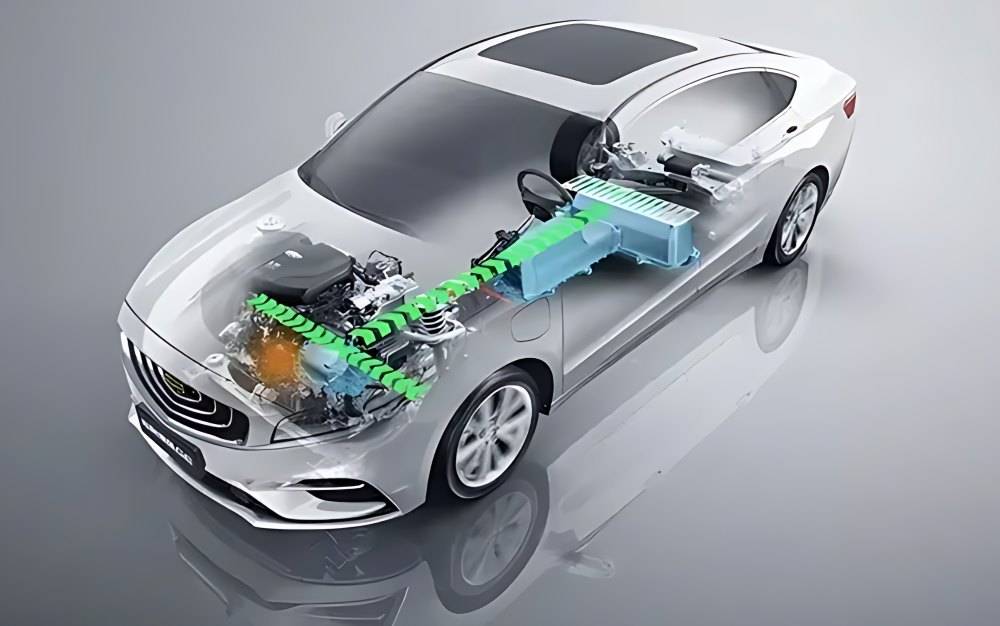
| 적용 분야 | 이점 |
|---|---|
| 전극 첨가 재료 | - 배터리의 전도성 및 안정성 향상 |
| - 전기 자동차 및 재생 에너지 저장 시스템에 중요 | |
| 고체 배터리 전해질 필러 | - 액체 전해질에 대한 보다 안전한 대안 제공 |
| - 배터리의 열 폭주 위험 감소 | |
| 반도체 산업 | - 고성능 칩 연마 및 연마에 필수적 |
| - 표면 마감 및 치수 정확도 보장 |
이러한 새로운 응용 분야는 에너지 저장 및 반도체 기술을 발전시키는 데 있어 고순도 알루미나의 다목적성과 전략적 중요성을 강조합니다.
보에마이트
주요 응용 분야
핵심 무기 코팅 재료인 보에마이트는 리튬 배터리 다이어프램 산업에서 중추적인 역할을 담당하고 있습니다. 2022년 출하량은 32,000톤으로 급증하여 전년 대비 70% 이상의 괄목할 만한 성장을 기록했습니다. 이러한 큰 증가는 배터리 성능과 안전성을 향상시키는 데 있어 이 소재가 매우 중요하다는 것을 보여줍니다.
리튬 배터리에서 보에마이트의 주요 기능은 다이어프램을 강화하여 고온 및 급속 충전-방전 사이클 동안 안정적으로 유지되도록 하는 것입니다. 이러한 안정성은 전기 자동차 및 에너지 저장 시스템의 애플리케이션에 가장 중요한 단락을 방지하고 배터리 수명을 연장하는 데 매우 중요합니다.
또한 높은 열 안정성과 다양한 기판에 대한 우수한 접착력 등 보마이트의 고유한 특성으로 인해 첨단 배터리 기술에 이상적인 선택이 될 수 있습니다. 고성능 배터리에 대한 수요가 계속 증가함에 따라 배터리 설계의 혁신과 전기 자동차의 채택 증가에 힘입어 보에마이트 시장은 더욱 확대될 것으로 예상됩니다.
요약하자면, 리튬 배터리 부문에서 보마이트의 견고한 성장은 배터리 기술 발전에 필수적인 역할을 하며 보다 효율적이고 안정적인 에너지 저장 솔루션의 기반을 마련하고 있다는 점을 강조합니다.
미래 시장 잠재력
새로운 에너지 차량 및 에너지 저장 시스템 시장이 급성장하면서 리튬 이온 배터리 다이어프램의 핵심 부품인 보에마이트에 대한 수요가 크게 증가할 것으로 예상됩니다. 이러한 산업이 계속 확장됨에 따라 배터리 성능과 안전성을 향상시키는 보에마이트의 고유한 특성으로 인해 보에마이트의 수요가 급증할 것으로 예상됩니다.
보마이트 수요의 주요 동인
- 배터리 성능 향상: 보에마이트의 높은 열 안정성과 화학적 불활성은 배터리 다이어프램에 이상적인 소재로, 배터리 수명을 연장하고 안전성을 향상시킵니다.
- 에너지 저장 솔루션: 에너지 저장 시장, 특히 그리드 규모의 저장 시스템이 빠르게 성장함에 따라 효율적이고 안정적인 에너지 저장을 보장하기 위해 보에마이트와 같은 첨단 소재가 필요합니다.
- 지속 가능한 모빌리티: 전기자동차(EV)로의 전환은 뵘마이트 수요의 주요 촉매제입니다. 각국 정부와 자동차 제조업체가 전기차 인프라에 막대한 투자를 하면서 보마이트 시장은 크게 성장할 것으로 예상됩니다.
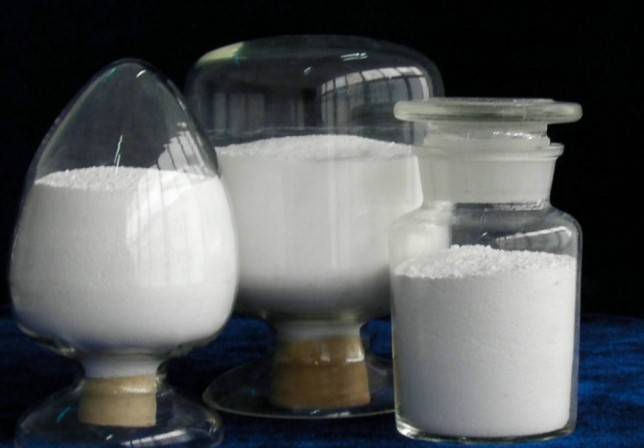
시장 전망
| 시장 분야 | 현재 수요(2022년) | 예상 수요 (2025) | 성장률(연평균 성장률) |
|---|---|---|---|
| 신에너지 차량 | 15,000톤 | 35,000톤 | 32% |
| 에너지 저장 시스템 | 10,000톤 | 25,000톤 | 35% |
| 합계 | 25,000톤 | 60,000톤 | 33% |
위의 표는 주요 부문에서 보에마이트 수요의 예상 성장률을 보여 주며, 새롭게 부상하고 있는 광범위한 시장 공간을 강조합니다. 이러한 성장은 이 소재의 보급률 증가를 나타낼 뿐만 아니라 진화하는 에너지 환경에서 이 소재의 중요한 역할을 강조합니다.
요약하자면, 보에마이트의 미래 시장 잠재력은 새로운 에너지 차량 및 에너지 저장 시스템 시장의 확대에 힘입어 방대합니다. 이러한 산업이 지속적으로 혁신하고 규모를 확장함에 따라 보에마이트는 성장과 발전을 위한 상당한 기회를 제공하면서 점점 더 중추적인 역할을 할 것으로 기대됩니다.
기타 중요한 시장
다용도 첨단 세라믹 파우더인 보에마이트는 주요 시장을 넘어 다양한 산업 분야에서 중요한 기여를 하며 그 응용 분야를 확장하고 있습니다. 특히 다음과 같은 생산에 사용됩니다. 흡착제 의 생산에 사용되며, 높은 표면적과 화학적 안정성을 활용하여 기체와 액체를 정화하는 데 활용됩니다. 다음과 같은 분야에서 정형외과 에서 보마이트는 생체 적합성 재료의 개발을 지원하여 임플란트의 내구성과 성능을 향상시킵니다.
분야 치과 보마이트는 치과용 세라믹을 만드는 데 필수적이며 뛰어난 미적 및 기계적 특성을 제공합니다. 사용 분야 생의학 에서도 보마이트는 약물 전달 시스템과 조직 공학 스캐폴드의 핵심 구성 요소로 사용됩니다. 또한 보마이트는 다음과 같은 제조에 활용됩니다. 고성능 구리 피복 보드 를 함유하고 있어 전자 기기의 소형화 및 효율성에 기여합니다.
또한, 보마이트는 다음과 같은 원료로 사용됩니다. 촉매 및 시약 의 원료로 사용되어 화학 합성 및 환경 보호 공정에서 중요한 역할을 합니다. 이러한 다양한 응용 분야는 여러 분야의 기술 발전에 있어 보마이트의 중추적인 역할을 강조합니다.
질화 알루미늄
열 방출에 이상적
질화 알루미늄(AlN)은 고출력, 고납, 대형 칩 패키징 기판에 필수적인 특성인 뛰어난 열 전도성이 특징입니다. 이 첨단 세라믹 소재는 열을 효율적으로 방출하여 가혹한 작동 조건에서도 전자 부품의 안정성과 수명을 보장합니다.
반도체 기술 분야에서 AlN의 열 전도성은 다른 많은 소재를 능가하기 때문에 고성능 칩을 지원하는 기판으로 선호됩니다. 이러한 기판 내에서 낮은 온도를 유지하는 능력은 열 성능 저하를 방지하고 최적의 성능을 보장하는 데 매우 중요합니다.
또한 GaN, AlGaN, AlN 에피택셜 층과 같은 다양한 반도체 재료와의 호환성은 AlN의 유용성을 더욱 높여줍니다. 이러한 조합은 차세대 전자 기기 개발에 필수적인 우수한 열적 매칭과 화학적 호환성을 제공합니다.
요약하면 질화 알루미늄은 뛰어난 열 전도성과 반도체 재료와의 호환성으로 인해 첨단 칩 패키징 기판에 이상적인 소재로 자리매김하여 고성능 전자기기의 지속적인 발전을 지원합니다.
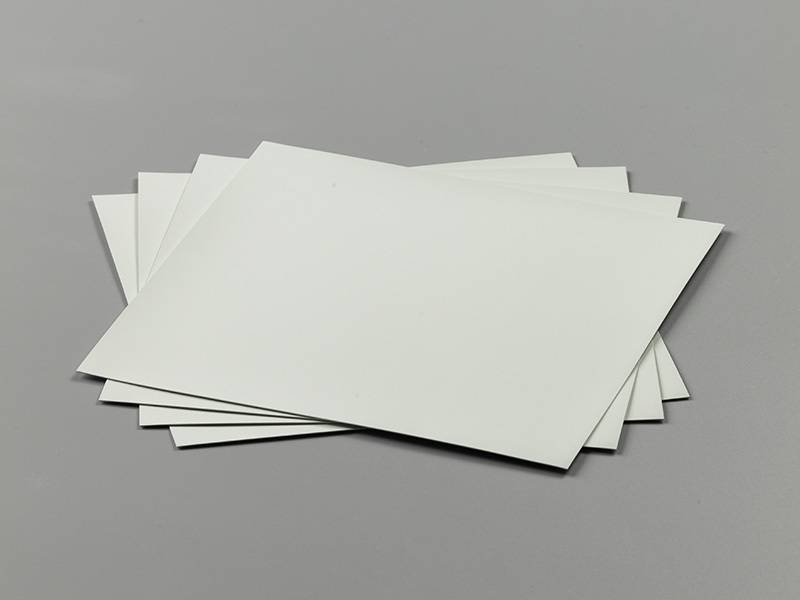
반도체 재료와의 호환성
질화알루미늄(AlN) 결정은 GaN, AlGaN 및 AlN 재료의 에피택셜 성장을 위한 탁월한 기판 역할을 합니다. 이러한 호환성은 우수한 열 매칭과 화학적 친화성에 기반을 두고 있으며, 이는 반도체 장치의 성능과 신뢰성을 크게 향상시킵니다.
AlN 기판의 열 매칭 특성은 에피택셜 층의 격자 상수가 기판의 격자 상수와 밀접하게 정렬되도록 하여 결함 및 전위를 최소화합니다. 이러한 정렬은 반도체 층의 구조적 무결성과 전자적 특성을 유지하는 데 매우 중요합니다.
또한, 이러한 반도체 재료와 AlN의 화학적 호환성은 안정적이고 균일한 성장 공정을 가능하게 합니다. 이러한 안정성은 특히 통신 및 전력 전자 산업과 같이 고주파 및 고전력 작동이 필요한 애플리케이션에서 고품질 디바이스를 제작하는 데 필수적입니다.
요약하자면, AlN의 고유한 특성은 반도체 산업에서 없어서는 안 될 소재이며 첨단 전자 기기의 견고한 기반을 제공합니다.
환경 및 건강상의 이점
질화알루미늄(AlN)은 뛰어난 열 전도성뿐만 아니라 환경 및 건강상의 이점도 뛰어납니다. 무독성 소재인 AlN은 인체 건강이나 환경에 해를 끼치지 않으므로 안전과 지속 가능성이 가장 중요한 애플리케이션에 이상적인 선택입니다. 이러한 특성은 소재가 효과적이면서도 무해해야 하는 전자기기 분야에서 특히 중요합니다.
또한 AlN의 환경 친화성은 무독성을 넘어서는 것입니다. 기기의 내구성과 효율성을 향상시켜 전자 폐기물을 줄이는 데 기여합니다. AlN 기반 기판은 열 방출을 촉진함으로써 전자 부품의 수명을 연장하여 교체 빈도와 관련 환경 영향을 줄일 수 있습니다.
이러한 직접적인 이점 외에도 AlN은 에너지 효율이 높은 기술을 개발할 수 있게 함으로써 보다 광범위한 환경 목표를 지원합니다. 예를 들어, 자동차 산업에서 AlN으로 강화된 전자장치는 전기 자동차의 효율을 높여 전체 탄소 발자국을 줄이는 데 기여할 수 있습니다. 건강과 환경적 지속 가능성 측면에서 이 두 가지 이점은 전자제품의 미래와 그 이후의 핵심 소재로서 AlN의 역할을 강조합니다.
실리콘 질화물
다용도 세라믹 소재
고성능 세라믹 소재인 실리콘 질화물은 뛰어난 기계적 및 열적 특성으로 인해 다양한 산업 분야에서 폭넓게 활용되고 있습니다. 가장 주목할 만한 용도 중 하나는 경도와 내마모성이 뛰어나 거친 소재를 정밀하게 가공할 수 있는 고속 선삭 공구입니다. 자동차 분야에서 질화규소는 엔진 와이퍼 블레이드와 베어링에 필수적으로 사용되어 고응력 환경에서 내구성과 성능을 향상시킵니다.
항공우주 공학 분야에서 질화규소는 높은 온도 저항성과 낮은 열팽창성을 활용하여 가스 터빈의 안내 블레이드와 터빈 블레이드에 사용됩니다. 또한 전자제품의 방열 기판으로도 사용되어 고전력 기기의 효율적인 열 관리를 돕습니다. 이러한 산업 응용 분야 외에도 실리콘 질화물은 임플란트 및 보철물에서 생체 적합성과 강도를 제공하는 바이오세라믹으로서 의료 분야에서도 중요한 역할을 담당하고 있습니다.
| 응용 분야 | 산업 분야 | 이점 |
|---|---|---|
| 고속 선삭 공구 | 제조 | 높은 경도, 내마모성 |
| 엔진 와이퍼 블레이드 | 자동차 | 향상된 내구성, 응력 하에서의 성능 |
| 베어링 | 다양한 | 높은 부하 용량, 낮은 마찰 |
| 가스 터빈 블레이드 | 항공우주 | 높은 온도 저항, 낮은 열팽창 |
| 방열 기판 | 전자 제품 | 효율적인 열 관리 |
| 바이오세라믹 | 의료 | 생체 적합성, 임플란트의 강도 |
이 다재다능한 소재는 엔지니어링 및 기술 분야에서 가능성의 한계를 계속 넓혀가고 있으며, 수많은 산업 발전의 핵심 역할을 하고 있습니다.
라돔의 유망성
실리콘 질화물은 뛰어난 기계적 특성, 열 안정성, 낮은 유전율, 절제 특성에 대한 견고한 저항성으로 인해 라돔에 가장 유망한 재료로 각광받고 있습니다. 이러한 특성 덕분에 극한 조건에서 내구성과 성능이 가장 중요한 애플리케이션에 이상적인 선택입니다.
라돔용 실리콘 질화물의 주요 장점
- 기계적 강도: 실리콘 질화물은 기계적 강도가 우수하여 구조적 무결성을 손상시키지 않고 고압과 충격을 견딜 수 있습니다.
- 열 안정성: 열 안정성이 뛰어나 극한의 기상 조건에 노출되는 라돔에 매우 중요한 고온 환경에서도 안정적이고 기능적인 상태를 유지할 수 있습니다.
- 낮은 유전 상수: 실리콘 질화물의 낮은 유전 상수는 신호 손실을 줄이고 전자기 전송의 효율을 향상시켜 레이더 애플리케이션에 매우 적합합니다.
- 절제 저항: 실리콘 질화물은 고속 입자에 의해 마모되는 과정인 절제에 저항하는 능력이 있어 스트레스가 많은 환경에서도 장기적인 내구성과 성능을 보장합니다.
이러한 특성으로 인해 실리콘 질화물은 중요한 항공우주 및 방위 분야에서 향상된 성능과 수명을 약속하는 선도적인 레이돔 소재 후보로 자리매김하고 있습니다.
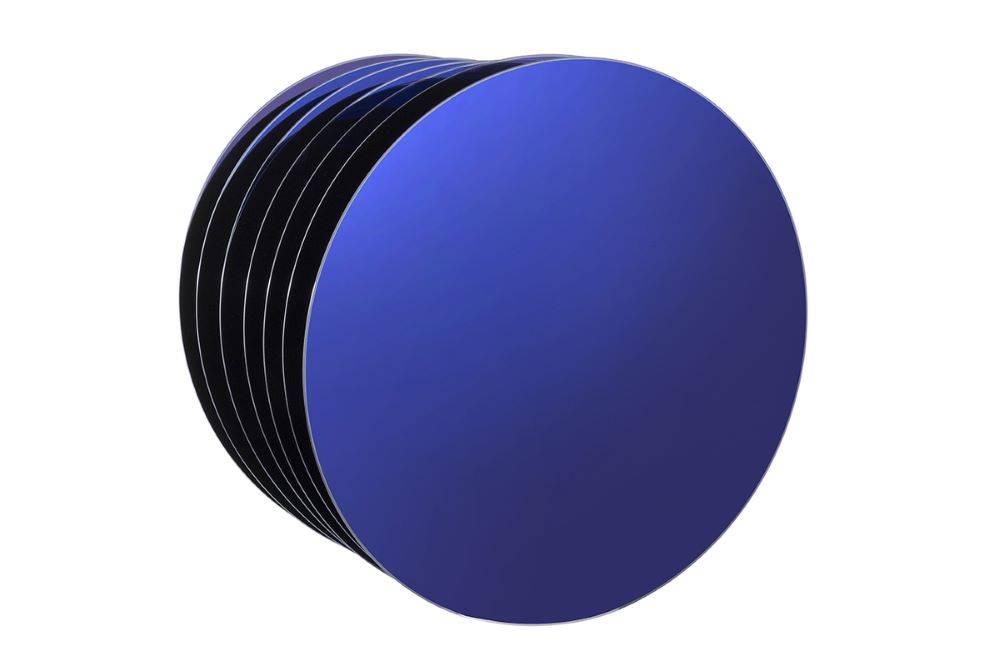
주요 응용 분야
실리콘 질화물은 베어링 볼 재료 및 방열 기판 재료로 사용되면서 큰 주목을 받고 있습니다. 다양한 응용 분야 중에서도 베어링 볼은 가장 널리 활용되는 제품입니다. 베어링 볼은 높은 경도, 내마모성, 우수한 열 안정성 등 우수한 기계적 특성을 가지고 있어 정밀도와 내구성이 요구되는 산업에서 필수적으로 사용됩니다.
베어링 볼 외에도 실리콘 질화물은 다양한 핵심 부품에도 사용됩니다. 예를 들어 엔진 와이퍼 블레이드, 가스 터빈의 가이딩 블레이드, 터빈 블레이드에 사용되며, 높은 강도와 열충격 저항성이 특히 유리합니다. 또한 방열 기판으로서 실리콘 질화물은 최적의 성능과 수명을 위해 효율적인 열 관리가 필수적인 전자 기기에서 매우 중요한 역할을 합니다.
| 응용 분야 | 이점 |
|---|---|
| 베어링 볼 | 높은 경도, 내마모성, 뛰어난 열 안정성 |
| 엔진 와이퍼 블레이드 | 고강도, 열충격 저항성 |
| 가스 터빈의 가이딩 블레이드 | 고강도, 열충격 저항성 |
| 터빈 블레이드 | 고강도, 열충격 저항성 |
| 방열 기판 | 효율적인 열 관리, 최적의 성능, 긴 수명 |
실리콘 질화물은 다양한 용도와 우수한 기계적 특성으로 인해 첨단 산업에서 선택되는 소재로 다양한 응용 분야에서 신뢰성과 성능을 보장합니다.
구형 알루미나
주류 열 전도성 분말
구형 알루미나는 하이엔드 열 전도성 분야에서 가장 널리 사용되는 열 전도성 분말로 입지를 굳혔습니다. 이러한 우위는 몇 가지 주요 요인에 기인합니다:
- 높은 열전도율: 구형 알루미나는 열 전달 능력이 뛰어나 효율적인 열 관리가 필요한 애플리케이션에 필수적인 소재입니다.
- 높은 충진 계수: 재료 내부를 조밀하게 채울 수 있어 공간 제약 없이 최적의 성능을 보장합니다.
- 우수한 이동성: 가공 중 분말의 유동성이 균일한 분산을 촉진하여 열 전도성 소재의 전반적인 효과를 향상시킵니다.
- 성숙한 기술: 구형 알루미나에 대한 광범위한 연구 개발 투자로 견고하고 신뢰할 수 있는 제조 공정이 탄생했습니다.
이러한 특성 덕분에 구형 알루미나는 전자 제품부터 신에너지 자동차에 이르기까지 우수한 열 전도성을 요구하는 산업 분야에서 가장 적합한 옵션으로 자리매김하고 있습니다.
시장 성장 및 향후 전망
전 세계 구형 알루미나 열전도성 분말 시장은 2025년까지 시장 규모가 54억 4천만 위안에 달할 것으로 예상되는 등 크게 확대될 것으로 전망됩니다. 이러한 성장은 28.2%의 강력한 연평균 성장률(CAGR)이 뒷받침하고 있으며, 이는 다양한 산업 분야에서 첨단 열 관리 솔루션에 대한 수요 증가를 반영하고 있습니다.
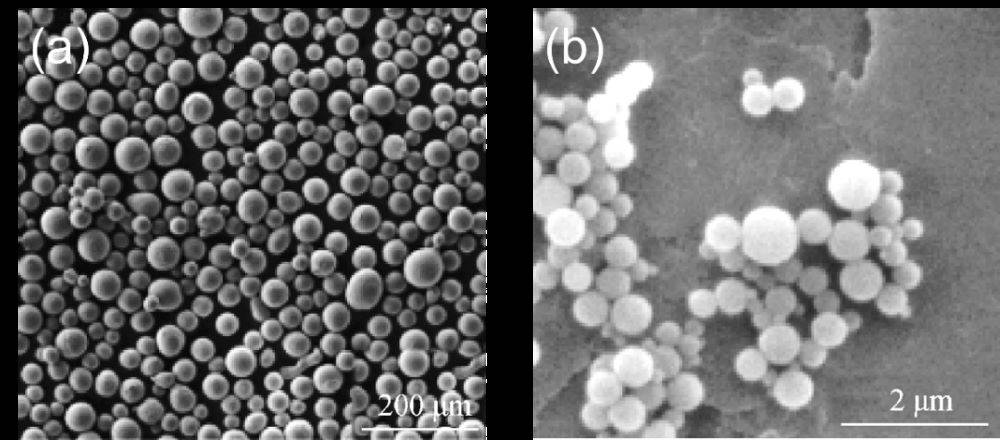
시장 성장의 주요 동인
-
기술 발전: 제조 공정의 지속적인 개선과 고성능 구형 알루미나 분말의 개발이 시장 확대를 주도하고 있습니다. 이러한 발전은 재료의 열전도율과 처리 효율을 향상시켜 하이엔드 애플리케이션에 더욱 매력적입니다.
-
전자 분야에서의 수요 증가: 특히 스마트폰, 태블릿, 고성능 컴퓨팅 장치 등 전자 부문은 구형 알루미나의 주요 소비처입니다. 이러한 장치에서 효율적인 열 방출에 대한 필요성이 열 전도성 분말에 대한 수요를 촉진하고 있습니다.
-
신에너지 자동차(NEV): 급성장하는 NEV 시장은 또 다른 중요한 동인입니다. 구형 알루미나는 배터리, 전자 제어 장치 및 모터의 열 관리 시스템에 광범위하게 사용되어 전기 자동차에서 최적의 성능과 안전성을 보장합니다.
-
항공우주 및 방위: 항공우주 및 방위 산업 분야에서는 우수한 열 특성 때문에 구형 알루미나를 점점 더 많이 채택하고 있습니다. 열 차폐막에서 열 보호 시스템에 이르기까지 다양한 응용 분야가 시장 성장에 기여하고 있습니다.
미래 전망
구형 알루미나 시장의 미래는 유망해 보이며, 몇 가지 새로운 트렌드가 그 궤도를 형성할 것으로 예상됩니다:
- 재료 과학의 혁신: 지속적인 연구와 개발로 새로운 제형과 응용 분야가 생겨나면서 시장 성장이 더욱 촉진될 것으로 보입니다.
- 지속 가능성 이니셔티브: 환경에 대한 우려가 커지면서 제조업체들은 친환경적인 생산 방법을 채택하고 있으며, 이는 보다 지속 가능한 구형 알루미나 제품의 개발로 이어질 수 있습니다.
- 글로벌 확장: 아시아 태평양의 신흥 시장, 특히 중국과 인도는 급속한 산업화와 첨단 소재에 대한 투자 증가로 인해 상당한 성장을 보일 것으로 예상됩니다.
요약하면, 구형 알루미나 열전도성 분말 시장은 기술 발전, 주요 부문의 수요 증가, 글로벌 시장 확대에 힘입어 상당한 성장을 이룰 것으로 예상됩니다.
새로운 에너지 차량에서의 응용 분야
구형 알루미나는 신에너지 차량(NEV)의 열 관리 시스템을 개선하는 데 중요한 역할을 합니다. 특히 NEV 배터리, 전자 제어 장치(ECU) 및 모터의 열 전도성 재료 및 열 인터페이스 재료(TIM)에 통합됩니다. 이러한 응용 분야는 최적의 작동 온도를 유지하여 이러한 핵심 부품의 수명과 효율성을 보장하는 데 필수적입니다.
NEV 배터리의 경우 구형 알루미나가 함유된 열 전도성 소재는 효율적인 열 방출을 촉진하여 열 폭주를 방지하고 안전한 작동을 보장합니다. 구형 알루미나의 높은 열전도율은 배터리 작동 중 발생하는 열을 효과적으로 관리하여 배터리 수명을 연장하고 성능을 향상시킵니다.
ECU에서 구형 알루미나는 전자 부품과 방열판 사이의 간격을 메워 신속하고 효율적인 열 전달을 보장하기 위해 TIM에 사용됩니다. 이는 작동 중에 상당한 열을 발생시키는 ECU에서 특히 중요합니다. 구형 알루미나를 사용하면 과열 위험이 최소화되어 ECU의 신뢰성과 성능이 향상됩니다.
마찬가지로 NEV 모터에서도 고속 작동 시 발생하는 열을 관리하기 위해 열 전도성 소재에 구형 알루미나를 사용합니다. 이는 모터의 효율을 유지하고 과열로 인한 기계적 고장 위험을 줄이는 데 도움이 됩니다. 이러한 응용 분야에서 구형 알루미나의 사용은 새로운 에너지 차량의 전반적인 설계와 성능에서 그 중요성을 강조합니다.
관련 제품
- 고급 엔지니어링 정밀 세라믹 질화알루미늄(AlN) 세라믹 시트
- 산업용 고급 알루미나 Al2O3 세라믹 절연 로드
- 엔지니어링 첨단 세라믹용 고순도 알루미나 과립 분말
- 고온 저항 및 절연 기능이 있는 엔지니어링 고급 세라믹용 고품질 알루미나 세라믹 나사
- 첨단 엔지니어링 파인 세라믹 저온 알루미나 과립 분말


